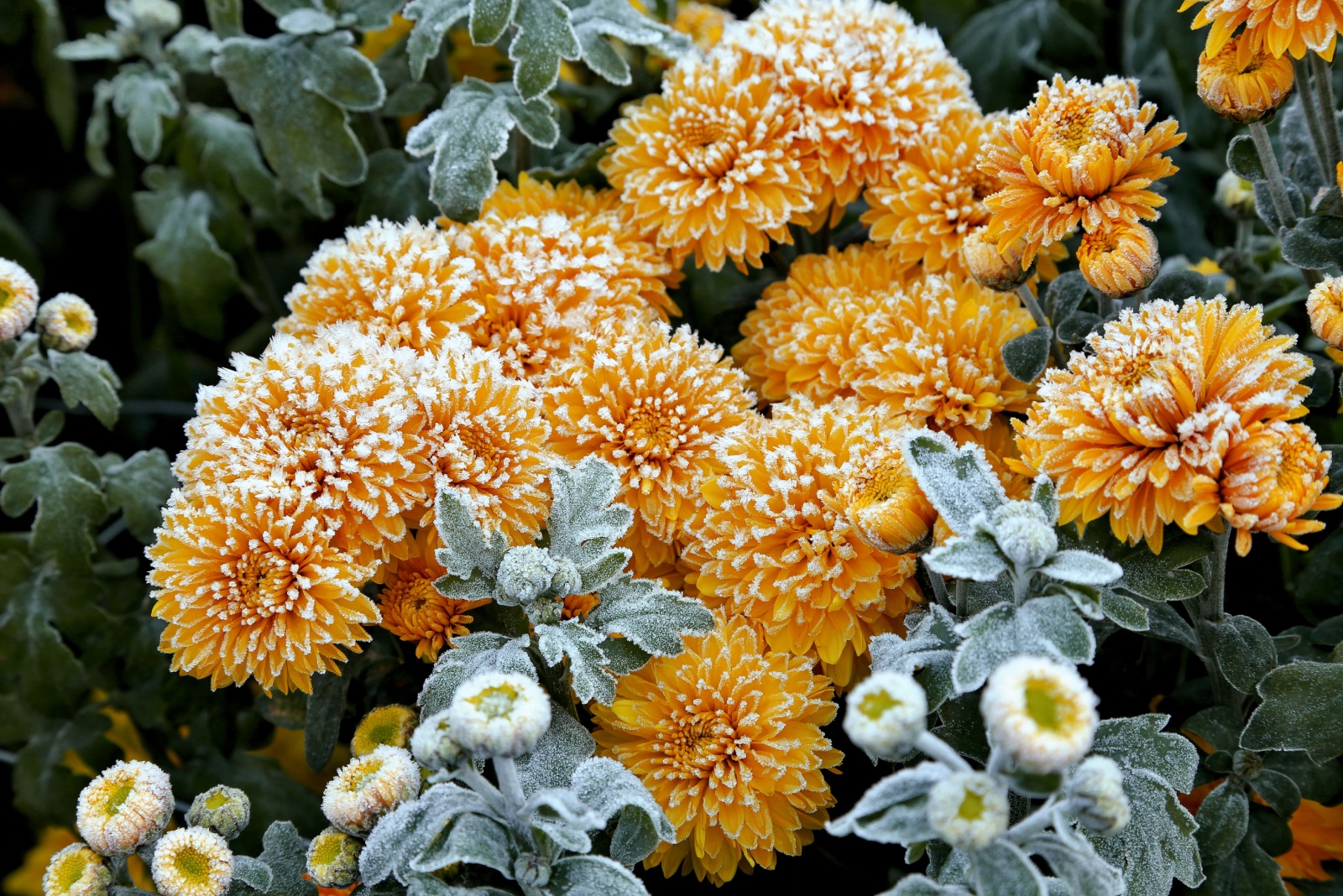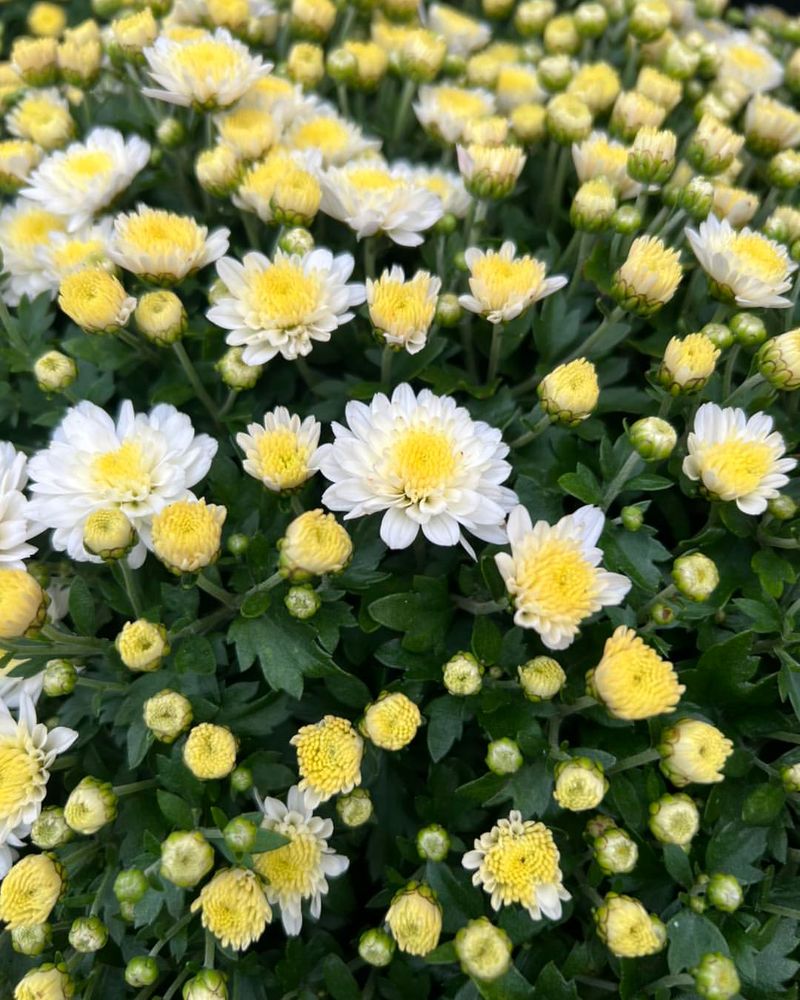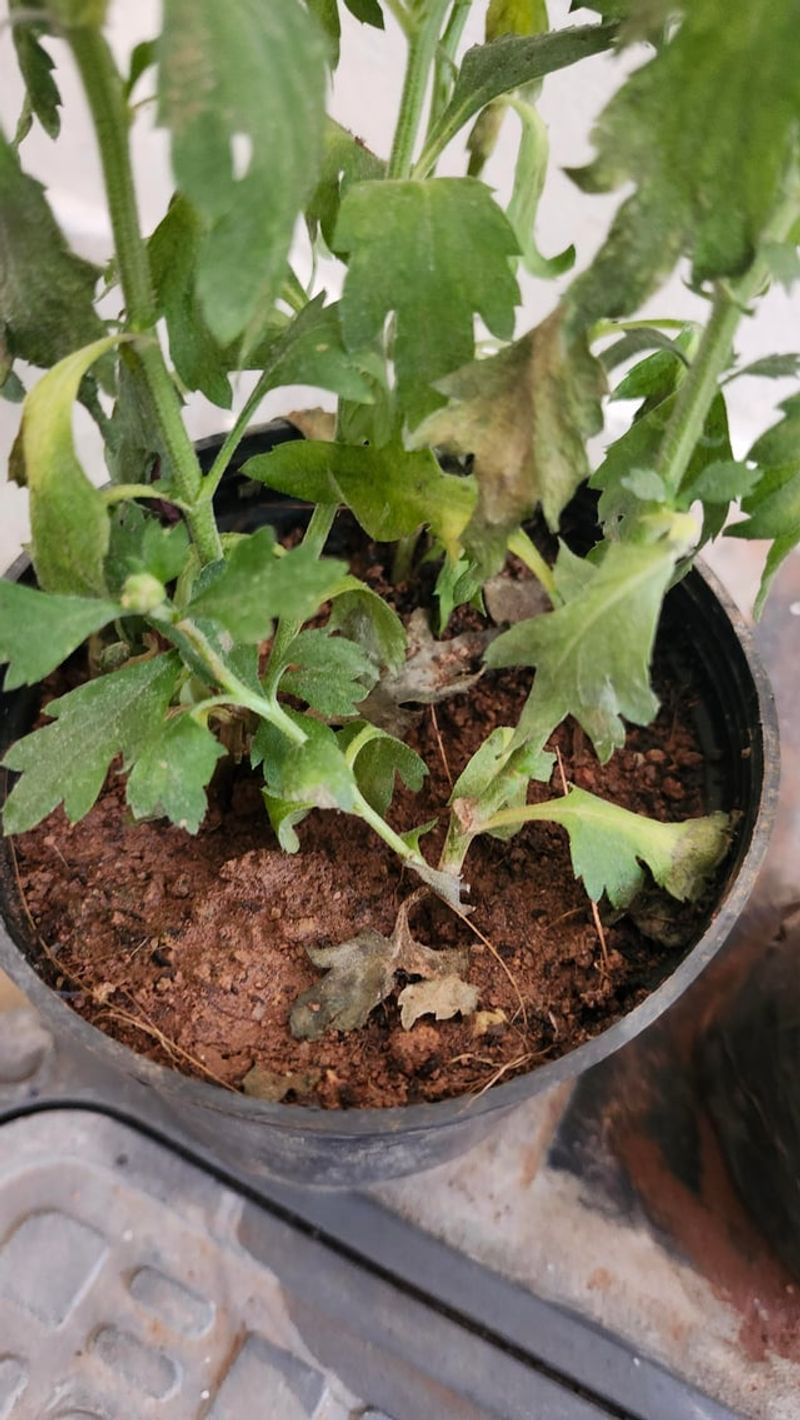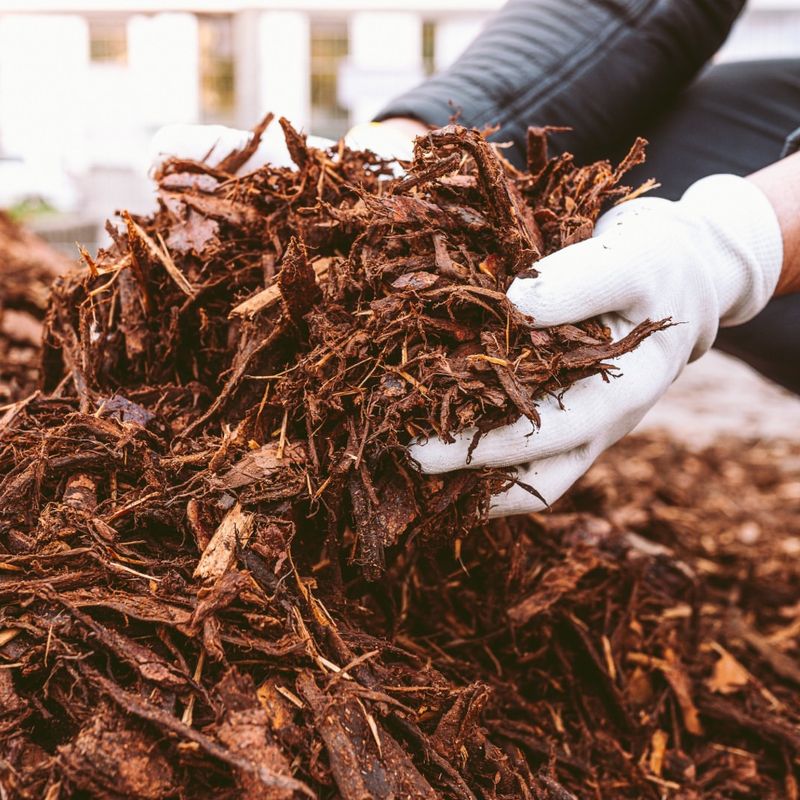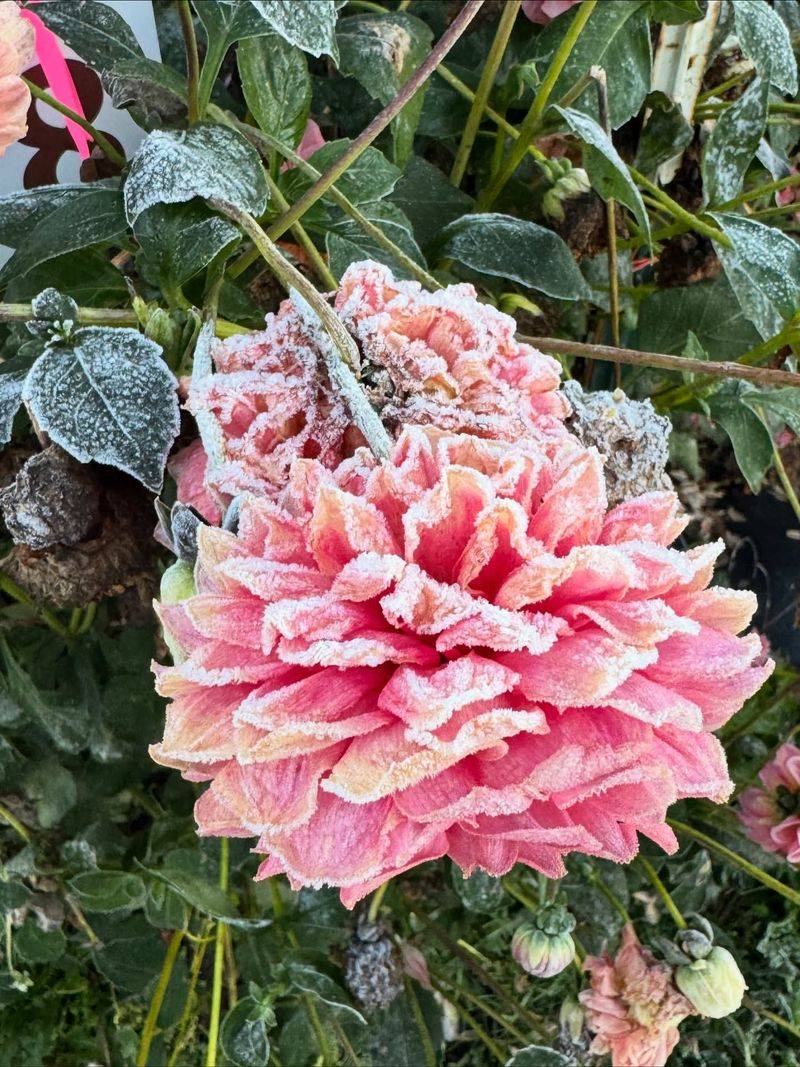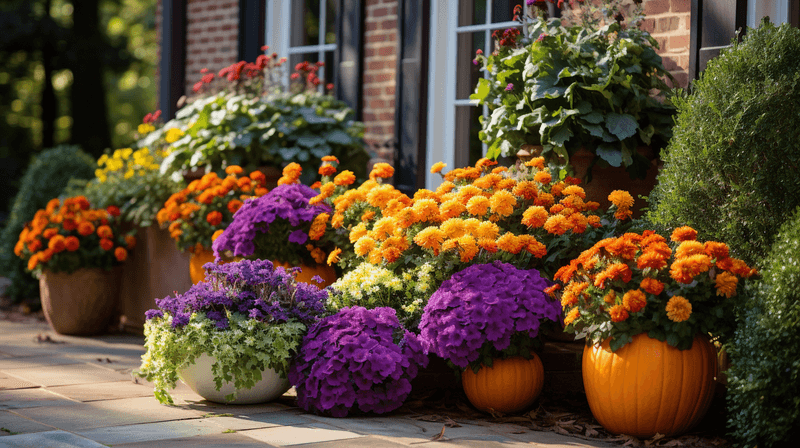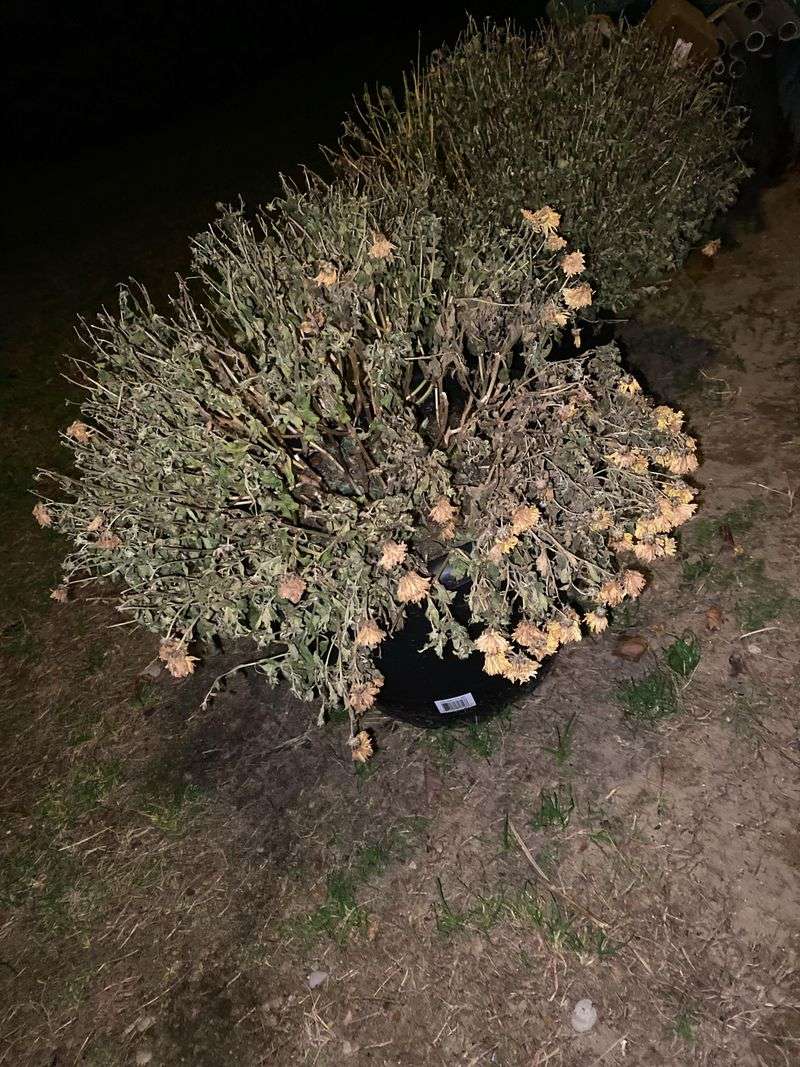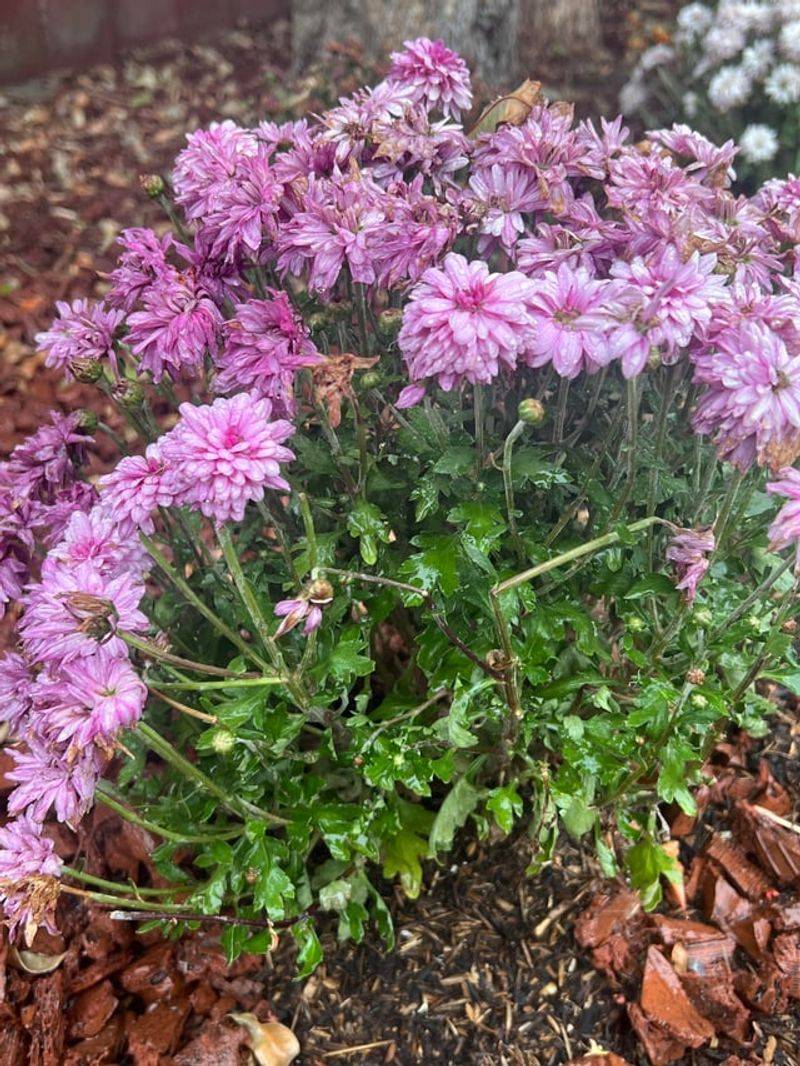Michigan’s fall weather can be unpredictable, and those beautiful mums you planted can quickly turn brown when frost hits overnight. Chrysanthemums add gorgeous color to your garden during autumn, but they need special care when temperatures drop.
Learning how to shield these hardy plants from freezing conditions will help you enjoy their vibrant blooms much longer throughout the season.
1. Choose Cold-Hardy Mum Varieties
Not all mums handle Michigan’s chilly nights equally well. Garden mums bred specifically for colder climates survive better than decorative types sold mainly for temporary color.
Look for varieties labeled as hardy or perennial when shopping at nurseries. Belgian mums and cushion mums typically withstand frost better than other types.
Plant them early in the season, ideally by late summer, so roots establish before winter arrives. Strong root systems make all the difference when temperatures plummet unexpectedly overnight.
2. Water Properly Before Frost Arrives
Well-hydrated plants handle cold stress much better than thirsty ones. Water your Michigan mums thoroughly during the day when frost is forecasted for that night.
Moist soil holds heat longer than dry ground, creating a protective buffer around roots. Avoid watering in the evening, though, since wet foliage overnight increases frost damage risk.
Check soil moisture by sticking your finger two inches deep. If it feels dry, give plants a good soaking in the morning or early afternoon hours.
3. Apply Thick Mulch Around The Base
A generous layer of mulch acts like a warm blanket for your mums’ roots. Spread two to three inches of organic material such as shredded bark, straw, or dried leaves around each plant.
Mulch insulates soil, keeping ground temperatures more stable when air temperatures swing wildly. This protection helps roots stay healthy even during unexpected cold snaps.
Wait until after the first light frost to apply mulch, as this encourages plants to naturally harden off for Michigan winter conditions ahead.
4. Cover Plants With Protective Fabric
Frost blankets or old bedsheets work wonderfully for shielding mums on particularly cold Michigan nights. Drape fabric loosely over plants before sunset, making sure it reaches the ground.
Avoid using plastic, which traps moisture and can actually freeze plants faster. Breathable materials allow air circulation while trapping warmth radiating from the soil below.
Remove covers each morning once temperatures rise above freezing. Plants need sunlight and air circulation during daytime hours to stay healthy and continue blooming beautifully.
5. Position Mums In Sheltered Locations
Strategic placement makes a huge difference in frost protection. Spots near your Michigan house foundation, under eaves, or beside walls stay several degrees warmer than open areas.
Buildings radiate stored heat throughout the night, creating microclimates that shield nearby plants. Southern-facing locations receive maximum sunlight, which also helps warm soil.
If mums are in containers, move them closer to protected areas when frost threatens. Even a few feet of distance from open space can mean the difference between thriving blooms and damaged flowers.
6. Avoid Pruning Before Winter
Resist the urge to tidy up your mums once blooms fade. Those dried stems and leaves actually provide natural insulation for the plant’s crown and roots.
Dead foliage traps air pockets that buffer against freezing winds and temperatures. Many gardeners make the mistake of cutting plants back too early, exposing vulnerable parts unnecessarily.
Wait until spring arrives in Michigan to prune away dead material. You’ll notice new growth emerging from the base once warmer weather returns, signaling it’s finally safe to clean up.
7. Monitor Weather Forecasts Regularly
Michigan weather changes rapidly during fall, so staying informed helps you protect plants before damage occurs. Check local forecasts daily, especially during September through November.
Frost warnings typically issue when temperatures are expected to drop between 33 and 36 degrees Fahrenheit. Freeze warnings mean temperatures will hit 32 degrees or lower, requiring immediate action.
Set up weather alerts on your phone for convenience. Being proactive gives you time to cover plants, move containers, or water thoroughly before nighttime temperatures plummet unexpectedly.

